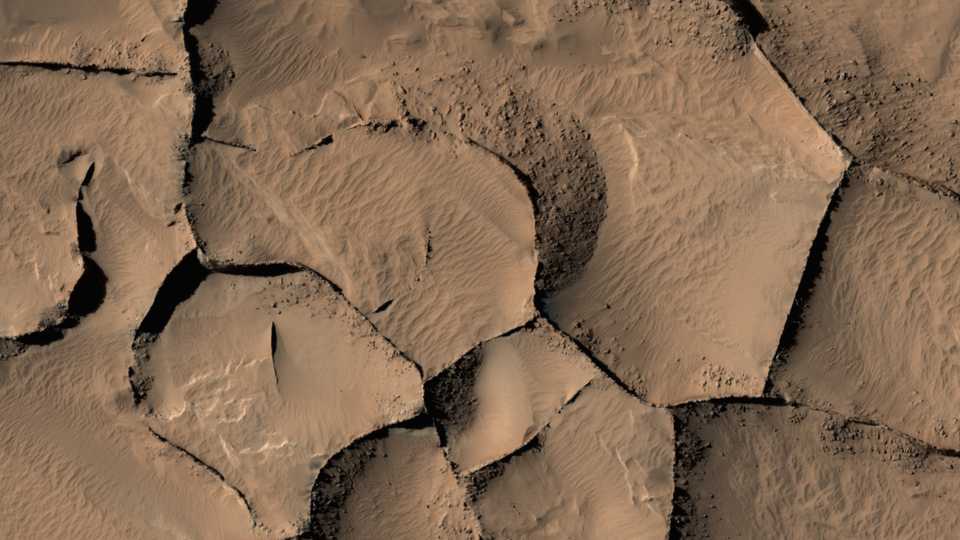Universe Update
Reviewing Ridges on the Red Planet

The martian landscape offers many wonders, including one of the highest peaks and one of the deepest canyons in the Solar System. It also has polygonal ridges—thin blade-like walls that intersect at angles to form straight-edged shapes. Researchers studying the Red Planet have determined that, like similar features on Earth, these ridges were formed by different processes.
Laura Kerner of NASA’s Jet Propulsion Laboratory observed polygonal ridges as tall as a 16-story building in the Medusae Fossae region on Mars’s equator in images from the Mars Reconnaissance Orbiter (MRO). The simplest explanation for the features is that lava flowed into pre-existing fractures in the ground and later resisted erosion better than material around them. And these ridges pushed Kerner to find more. “Finding these ridges in the Medusae Fossae region set me on a quest to find all the types of polygonal ridges on Mars,” she explains.
Mars rover missions have found smaller ridges they have been able to inspect up close, such as those at Garden City. Seen by Curiosity, these ridges are veins deposited by mineral-laden groundwater moving through underground fissures, long before erosion exposed the veins. Curiosity also recently imaged small boxwork ridges that likely originated as mud cracks.
At the other end of the size scale, ridges outline several rectangles each more than a mile (more than 2 kilometers) wide at a location called Inca City near the martian south pole. These may have resulted from impact-related faults underground, with fractures filled by rising lava that hardened and was later exposed by erosion.
“Polygonal ridges can be formed in several different ways, and some of them are really key to understanding the history of early Mars,” Kerber says. “Many of these ridges are mineral veins, and mineral veins tell us that water was circulating underground.”
Polygonal ridges in the Nilosyrtis Mensae region of northern Mars may hold clues about ancient wet, possibly warm environments. These tend to be in the same areas as water-related clues such as minerals that form in hot springs, clay-mineral layers, and channels carved by ancient streams. A larger sample is needed to test this hypothesis.
And Kerner wants your help on this diverse ridge quest. “We’re asking for volunteers to search for more polygonal ridges,” she shares, pointing citizen scientists to a brand-new Zooinverse program called Planet Four: Ridges. Finding as-yet-unidentified polygonal ridges in images from the Context Camera (CTX) on MRO could improve understanding about their relationship to other features and also will help guide future observations with the High Resolution Imaging Science Experiment (HiRISE) camera—also on MRO—to reveal details of the ridge networks.
What are you waiting for? Start exploring Mars for NASA now!
Image: NASA/JPL-Caltech/Univ. of Arizona